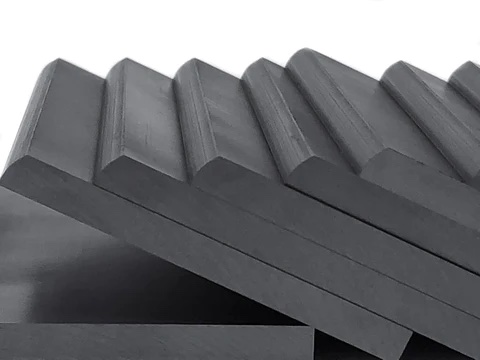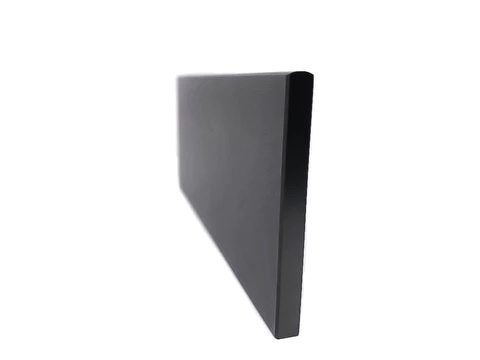Carbon Vane Anatomy
Let’s dive into the detailed examination of the carbon vane. What and why should you know about the carbon vane of the vacuum pump?
In any case, I think it’s always worth knowing more, getting to know the product that we install into the vacuum pump and compressor. Moreover, it is necessary if we want to save money, be it on operating, repair or standing costs.
We manufacture carbon vanes of different sizes and shapes, and the shape mostly depends on the slot position of the rotor.
The carbon vane of Busch pumps has a rounded design on one side. This ensures that the Busch SV vacuum pump and DC compressor work properly with our products.

The carbon vanes of Becker, Rietschle and DVP pumps have an angled surface with a small tread that wears properly after the first start. As the vanes wear continuously, they easily take the correct shape in the pump ring.

Finally, this is a success story from the past couple of years when we produced carbon vanes for silo compressors. It was a completely new shape with a symmetrically rounded tread in lengths of 140 and 240 mm. This was a good opportunity for us to produce a suitable part for a 30 kW compressor, with the capability of 2.5 bar overpressure. The large compressor requires 12 vanes of 240 mm, in addition to grease lubrication, with air cooling.

I think that the biggest issue is not the surface, but other logical developments, such as already cutting off the carbon vanes edges during production. Its purpose is not to make sharp and sensitive edges, but a slightly duller vane that is more resistant to mechanical effects.
Mechanical effects:
- warehouse storage
- delivery
- movement in production
- installation, repair
Some pump manufacturers already use edge breaking for carbon vanes, which we also support. Which version do you prefer?
Do you need to have a carbon vane manufactured? Request an offer at air24@air24.ie from AIR24.
Next topic: Why Is a Vacuum Pump Air Filter Important?